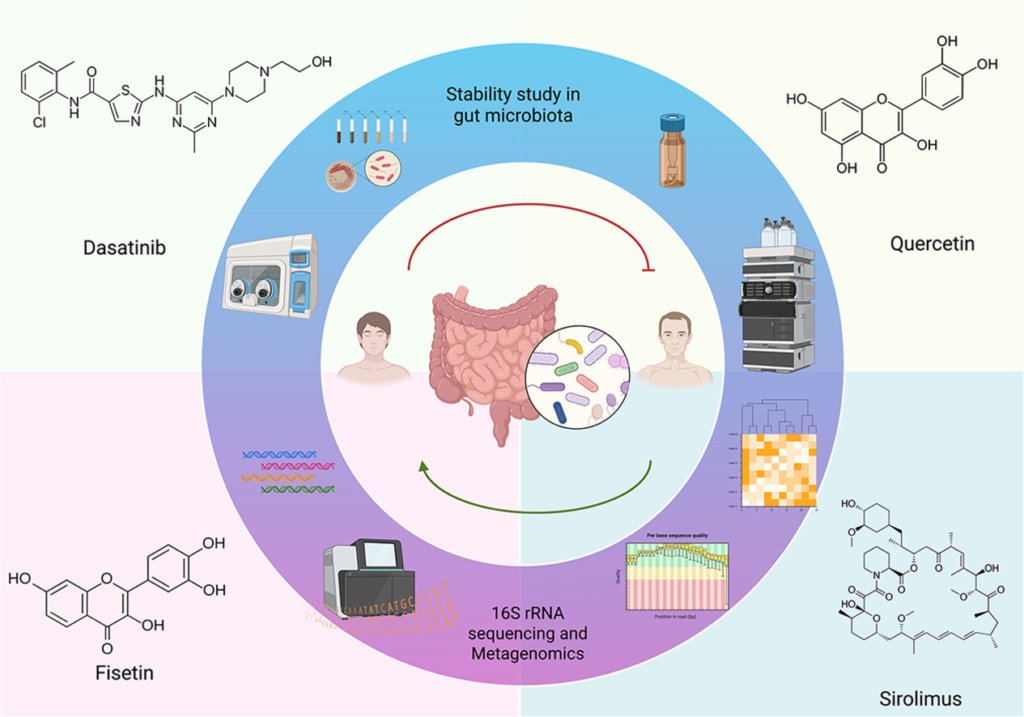- Home
- Investigating the bidirectional interactions between senotherapeutic agents and human gut microbiota
- Investigating the bidirectional interactions between senotherapeutic agents and human gut microbiota
Aging isn't just about getting older—it’s a complex biological process that affects disease risk, immune function, and drug response. A major driver of biological aging is cellular senescence, where damaged cells stop dividing but persist in tissues, releasing harmful substances that fuel inflammation and age-related disease.
Senotherapeutic agents, or senolytics, aim to clear these “zombie” cells, potentially slowing biological aging and preventing chronic illness. While their effects on tissues are well-studied, researchers are now investigating how these agents interact with another key player in aging: the gut microbiome.
In a recent study, we tested four senotherapeutic compounds—quercetin, fisetin, dasatinib, and sirolimus—using human faecal samples to simulate real gut conditions. Quercetin was completely broken down within six hours, while dasatinib remained more stable, suggesting differences in how these drugs may act in the body.
Metagenomic analysis revealed that all four compounds increased beneficial bacteria such as Bacteroides fragilis and Bifidobacterium longum, while reducing harmful species linked to age-related disease.
These findings suggest that senolytics may offer a dual benefit: eliminating senescent cells and reshaping the microbiome to support healthy aging. This gut-focused approach could open a promising new path toward longevity therapies.
Explore the full study here.



